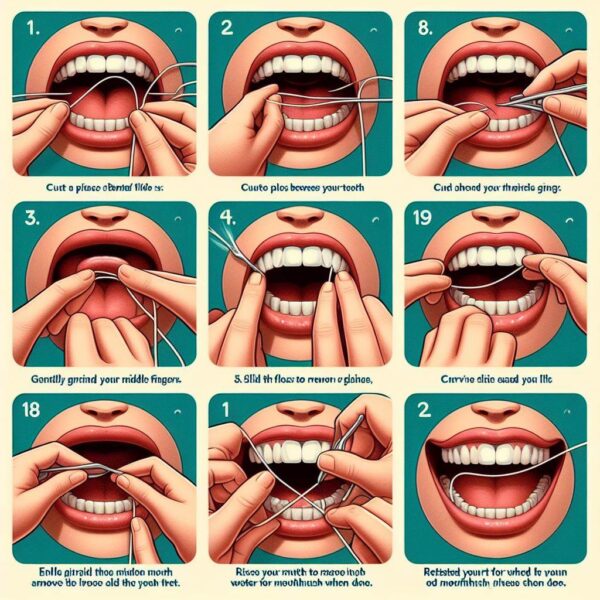
Dental flossing is a fundamental aspect of oral hygiene that helps remove plaque and food debris from between teeth and along the gum line. However, many people struggle with using dental floss correctly, leading to ineffective cleaning and potential oral health issues.
Understanding the proper technique for using dental floss is essential for maintaining optimal oral hygiene and preventing dental problems such as cavities, gum disease, and bad breath.
In this article, we’ll explore the importance of using dental floss correctly and provide practical tips for achieving thorough and effective flossing. By mastering the art of dental flossing, individuals can enhance their oral health and achieve a brighter smile.
How To Use Dental Floss Correctly
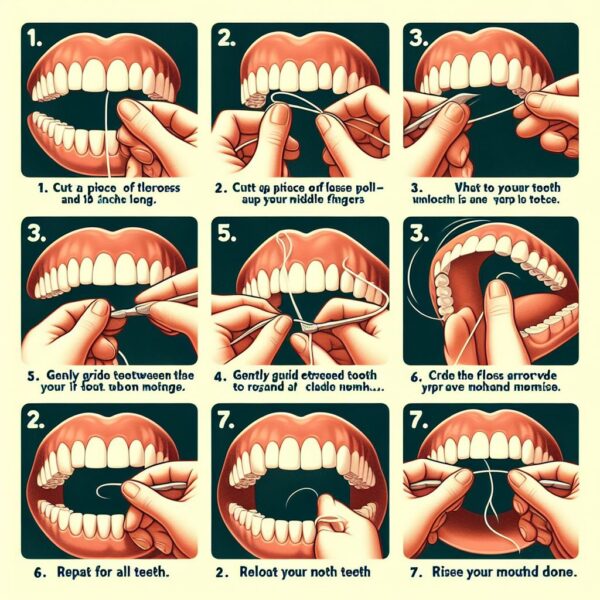
Mastering the Art of Dental Flossing:
Proper dental flossing technique involves several key steps to ensure thorough cleaning and optimal oral hygiene:
• Choose the Right Floss:
Select a dental floss that suits your preferences and needs, whether it’s waxed or unwaxed, flavored or unflavored, tape or string. The important thing is to use a floss that you find comfortable and easy to maneuver between your teeth.
• Use Enough Floss:
Cut a piece of dental floss approximately 18 to 24 inches long. This allows you to have enough floss to use a fresh section between each tooth without reusing the same piece, which can transfer bacteria.
• Wrap Floss Around Fingers:
Hold the floss between your thumbs and index fingers, leaving about 1 to 2 inches of floss to work with. Use your middle fingers to guide the floss as you move between your teeth.
• Glide Floss Between Teeth:
Gently guide the floss between your teeth using a back-and-forth motion. Avoid snapping the floss into place, as this can damage the gums.
• Curve Floss Around Each Tooth:
Curve the floss into a C-shape around each tooth and gently slide it up and down along the sides of the tooth and beneath the gum line. Be sure to floss both sides of each tooth and along the gum line to remove plaque and debris effectively.
• Use Fresh Sections of Floss:
As you move from tooth to tooth, use a fresh section of floss to avoid transferring bacteria from one tooth to another.
• Rinse and Repeat:
After flossing, rinse your mouth thoroughly with water or mouthwash to remove loosened plaque and debris. Repeat the flossing process at least once a day, ideally before bedtime, to maintain optimal oral hygiene. I hope now you’re fully aware of how to use dental floss correctly.
What Is Dental Floss
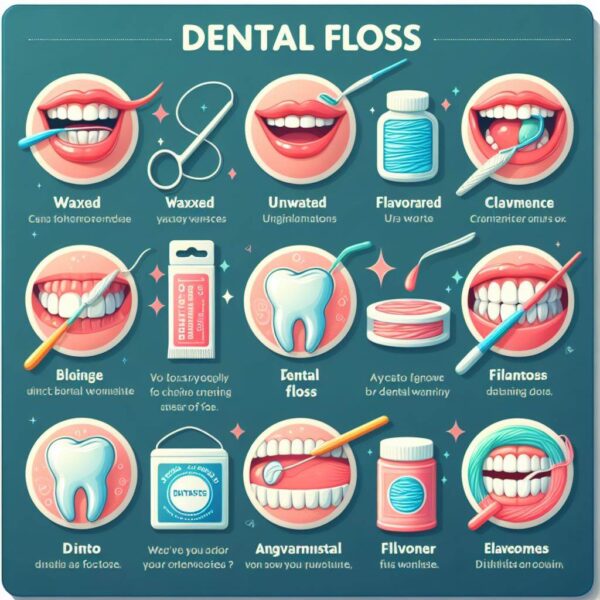
Dental floss is an indispensable tool in maintaining oral hygiene and preventing dental issues. It is a slender, flexible strand typically composed of nylon or Teflon, designed to clean the tight spaces between teeth and along the gum line.
While brushing teeth is essential for surface cleaning, dental flossing targets areas where toothbrush bristles cannot reach, ensuring thorough plaque and debris removal.
Incorporating dental floss into daily oral care routines helps prevent cavities, gum disease, and bad breath by eliminating bacteria and debris from areas prone to buildup and decay. In this article, we’ll explore the significance of dental floss and its role in promoting optimal oral health.
Elucidating The Importance Of Dental Floss:
Dental floss serves as a critical component of oral hygiene by effectively eliminating plaque and food particles from interdental spaces and below the gum line. Its significance lies in its ability to access areas inaccessible to toothbrushes, facilitating comprehensive cleaning and safeguarding against various dental issues.
By understanding the importance of dental floss and integrating it into daily oral care routines, individuals can maintain healthy teeth and gums, reducing the risk of dental decay and inflammation.
Why Is Dental Floss Important
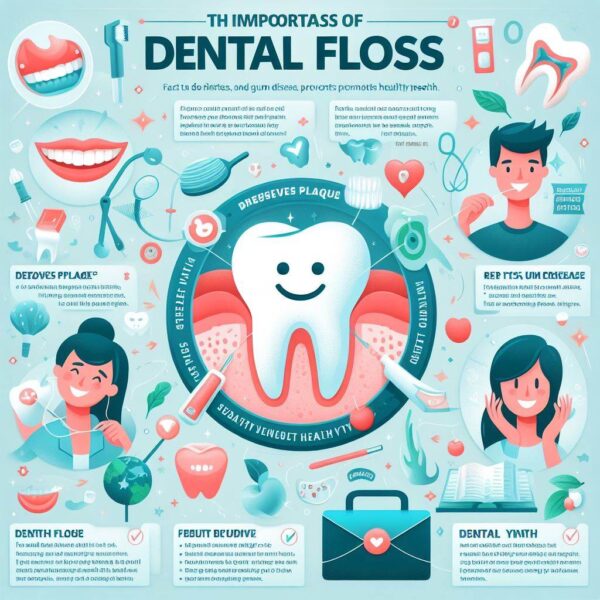
Dental floss stands as a cornerstone of oral hygiene, playing a crucial role in maintaining the health of teeth and gums. It is a slender, flexible strand, typically made of nylon or Teflon, engineered to reach the tight spaces between teeth and beneath the gum line which traditional toothbrushes cannot access.
While brushing effectively cleans the surfaces of teeth, dental flossing is indispensable for removing plaque, food particles, and bacteria from areas prone to buildup and decay.
Neglecting to floss regularly can lead to an increased risk of cavities, gum disease, and persistent bad breath. In this article, we will delve into the importance of dental floss and its impact on overall oral health.
Exploring The Significance Of Dental Floss:
Dental floss plays a pivotal role in oral hygiene by addressing key areas of the mouth that are often neglected during brushing alone. Here’s why dental floss is indispensable for maintaining optimal oral health:
1. Plaque and Tartar Removal:
Dental floss effectively removes plaque and tartar from between teeth and below the gum line, preventing the buildup of harmful bacteria that can lead to cavities and gum disease.
2. Prevention of Gum Disease:
Flossing helps prevent gum disease by removing plaque and bacteria that can irritate and inflame the gums, leading to gingivitis and, if left untreated, periodontitis.
3. Cavity Prevention:
By removing food particles and plaque from hard-to-reach areas, dental floss helps prevent the formation of cavities, particularly in the interdental spaces where decay commonly occurs.
4. Fresh Breath:
Regular flossing helps eliminate food particles and bacteria that can contribute to bad breath, ensuring a fresher and more pleasant oral environment.
5. Overall Oral Health:
Flossing is an essential part of a comprehensive oral hygiene routine, along with brushing and regular dental check-ups. It contributes to the overall health and longevity of teeth and gums, reducing the need for invasive dental treatments in the future.
What’s The Best Way To Floss With Braces?
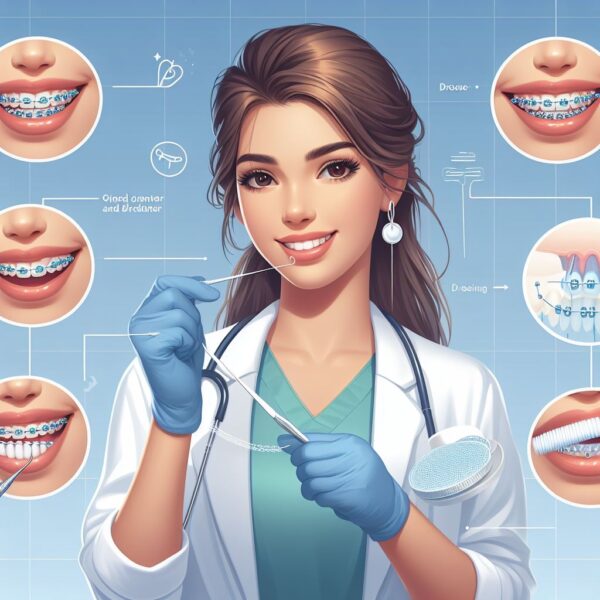
Flossing with braces can be a challenging task, yet it’s crucial for maintaining oral health and preventing complications such as cavities and gum disease during orthodontic treatment.
Braces create additional nooks and crannies where food particles and plaque can accumulate, making thorough cleaning essential. However, traditional flossing techniques may not be sufficient for individuals with braces, requiring alternative methods to ensure effective plaque removal.
Let’s explore the best strategies for flossing with braces, providing practical tips and techniques to help individuals maintain optimal oral hygiene throughout their orthodontic journey.
Navigating Flossing With Braces:
Flossing with braces presents unique challenges due to the wires and brackets that create additional obstacles for traditional flossing methods. Here are some effective strategies for flossing with braces:
• Use Specialized Flossing Tools:
Consider using orthodontic floss threaders, interdental brushes, or water flossers designed specifically for individuals with braces. These tools allow you to navigate around wires and brackets more easily, ensuring thorough cleaning between teeth and along the gum line.
• Choose the Right Floss:
Opt for waxed dental floss or dental tape, as they are less likely to shred or get caught in braces. Alternatively, consider using floss specifically designed for braces, which may have a stiffer texture or incorporate a built-in threader.
• Practice Proper Technique:
Thread the floss under the wire of each bracket using a floss threader or specialized flossing tool. Gently slide the floss up and down between adjacent teeth, making sure to clean both sides of each tooth and beneath the gum line.
• Be Patient and Thorough:
Flossing with braces may take longer than usual, so be patient and thorough in your approach. Take your time to clean between each tooth and around every bracket, ensuring that no food particles or plaque are left behind.
• Supplement with Interdental Brushes or Water Flossers:
In addition to traditional flossing, consider using interdental brushes or water flossers to clean hard-to-reach areas around brackets and wires. These tools can help dislodge food particles and plaque more effectively, enhancing overall oral hygiene.
When Should You Dental Floss?
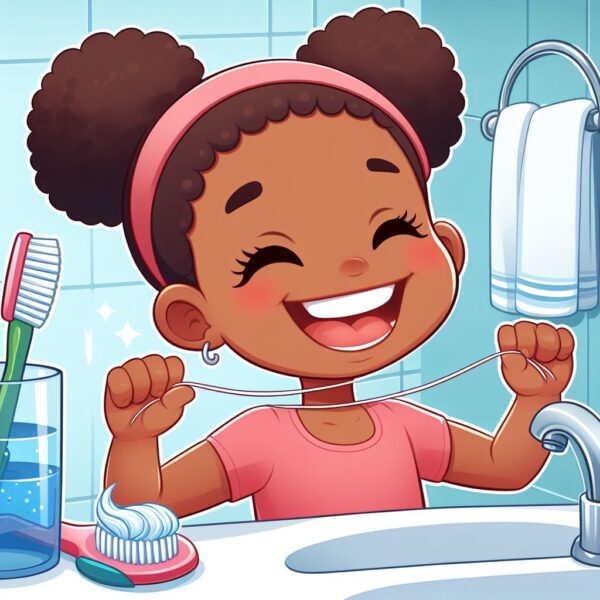
Dental flossing is a fundamental aspect of oral hygiene that complements brushing and contributes significantly to maintaining healthy teeth and gums. However, the timing of dental flossing can impact its effectiveness in removing plaque and preventing dental issues.
Understanding when to floss can optimize its benefits and promote better oral health outcomes. In this article, we will explore the importance of timing dental flossing within your daily oral care routine and discuss the factors to consider when deciding when to floss.
By adopting appropriate flossing habits and incorporating them into your daily routine, you can enhance your oral hygiene regimen and reduce the risk of dental problems such as cavities, gum disease, and bad breath.
Timing Your Dental Flossing Routine:
Determining the best time to floss is essential for maximizing its effectiveness in removing plaque and debris from between teeth and along the gum line. While there is no one-size-fits-all answer, several factors can influence when you should incorporate flossing into your daily oral care routine.
• Before or After Brushing:
Some dental professionals recommend flossing before brushing your teeth, as it helps loosen plaque and food particles, making them easier to remove during brushing. Others suggest flossing after brushing to ensure that any particles dislodged during flossing are thoroughly removed by brushing.
• Consistency is Key:
The most crucial aspect of timing your flossing routine is consistency. Whether you choose to floss before or after brushing, the important thing is to do it consistently every day.
Establishing a regular flossing habit ensures that plaque and debris are effectively removed from between teeth and along the gum line, reducing the risk of dental issues.
• Consider Personal Preferences:
Ultimately, the best time to floss is when it fits into your daily routine and is most convenient for you. Some people prefer to floss in the morning as part of their morning oral care routine, while others prefer to floss before bed as a final step before sleep.
• Adjust Based on Individual Needs:
Depending on your oral health needs and preferences, you may find that flossing at a particular time of day works better for you. Experiment with different timings to determine what feels most effective and comfortable for your oral hygiene routine.
How Many Types Of Dental Floss
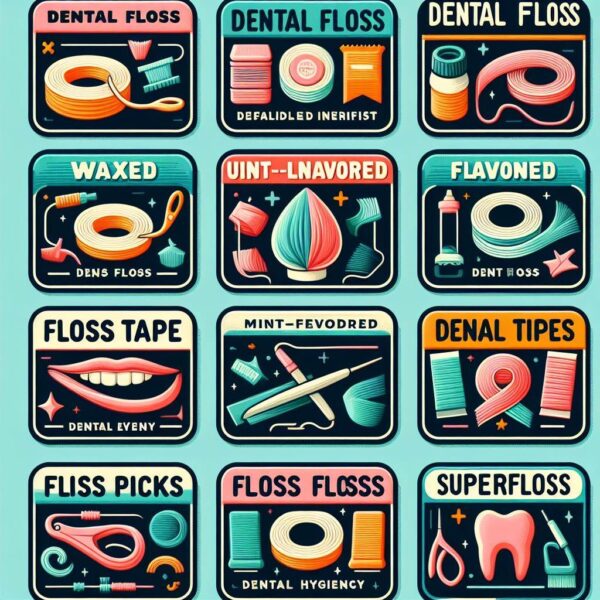
Dental floss comes in various types and forms, each designed to cater to different preferences, needs, and oral health concerns. Understanding the different types of dental floss available can help individuals choose the most suitable option for their unique dental care requirements.
Explore the diverse range of dental floss options on the market, highlighting their features, benefits, and considerations. By familiarizing yourself with the various types of dental floss, you can make informed decisions to optimize your oral hygiene routine and maintain healthy teeth and gums.
Exploring The Diversity Of Dental Floss:
Dental floss is available in multiple types and variations, each offering distinct advantages and considerations. Here are some common types of dental floss:
1. Nylon Floss:
Nylon floss, also known as multifilament floss, consists of multiple nylon strands twisted together. It comes in various thicknesses and flavors, making it suitable for individuals with different preferences and oral health needs.
2. PTFE Floss:
PTFE (polytetrafluoroethylene) floss, also known as monofilament floss, is made of a single strand of PTFE material. It slides more easily between teeth and is less likely to shred or fray compared to nylon floss, making it ideal for individuals with tight spaces or sensitive gums.
3. Waxed Floss:
Waxed floss has a coating of wax or PTFE, making it smoother and easier to slide between teeth. The waxed coating can also help the floss glide more effectively, particularly in tight or crowded areas.
4. Unwaxed Floss:
Unwaxed floss does not have a coating and is thinner than waxed floss. It may be suitable for individuals who prefer a more natural texture or have larger gaps between their teeth.
5. Dental Tape:
Dental tape is wider and flatter than traditional floss, making it suitable for individuals with wider spaces between their teeth or those who find traditional floss uncomfortable to use.
6. Flavored Floss:
Flavored floss comes in a variety of flavors, such as mint, cinnamon, or fruit, to make flossing a more pleasant experience. The flavoring can also help freshen your breath and leave a clean feeling after flossing.
7. Threader Floss:
Threader floss consists of a stiffened end or built-in loop that allows individuals with dental appliances or braces to easily thread the floss under wires and around brackets for thorough cleaning.
How To Use Other Tools To Make Flossing Easier
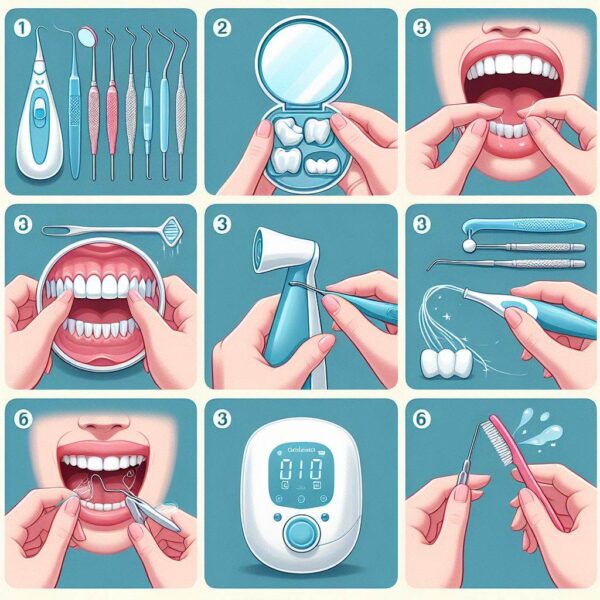
Flossing is a vital component of maintaining good oral hygiene, but for some individuals, traditional flossing methods can be challenging or uncomfortable to use. Fortunately, there are various alternative tools and techniques available to make flossing easier and more effective.
These tools can help individuals overcome common barriers to flossing, such as tight spaces between teeth, dental appliances, or dexterity issues. In this article, we will explore different tools and methods that can aid in flossing and promote better oral health.
By incorporating these alternative options into your oral care routine, you can ensure thorough plaque removal, prevent dental issues, and achieve a cleaner, healthier smile.
Alternative Tools For Easier Flossing:
While traditional dental floss is highly effective for removing plaque and debris from between teeth, some individuals may find it challenging to use. Fortunately, several alternative tools and techniques can make flossing easier and more accessible:
• Interdental Brushes:
Interdental brushes are small, cone-shaped brushes designed to clean between teeth and around dental appliances such as braces or bridges. They come in various sizes to fit different spaces and can be particularly useful for individuals with larger gaps between their teeth.
• Water Flossers:
Water flossers, also known as oral irrigators, use a stream of water to remove plaque and debris from between teeth and along the gum line. They are gentle on the gums and can be an excellent alternative for individuals with sensitive gums or those who find traditional flossing uncomfortable.
• Floss Picks:
Floss picks are small, disposable tools with a handle and a short piece of floss stretched between two prongs. They are easy to use and can be particularly convenient for individuals with limited dexterity or difficulty reaching certain areas of the mouth.
• Soft Picks:
Soft picks are flexible, rubbery tools with tiny bristles that help clean between teeth and massage the gums. They are gentle on the gums and can be an excellent option for individuals with sensitive gums or those who find traditional flossing uncomfortable.
• Electric Flossers:
Electric flossers, similar to electric toothbrushes, use high-frequency vibrations or water jets to remove plaque and debris from between teeth. They are easy to use and can be particularly effective for individuals with braces, implants, or other dental appliances.
• Floss Threaders:
Floss threaders are thin, flexible tools with a stiffened end or built-in loop that allows individuals with braces or dental appliances to easily thread floss under wires and around brackets for thorough cleaning.
Do I Floss Before Or After Brushing?
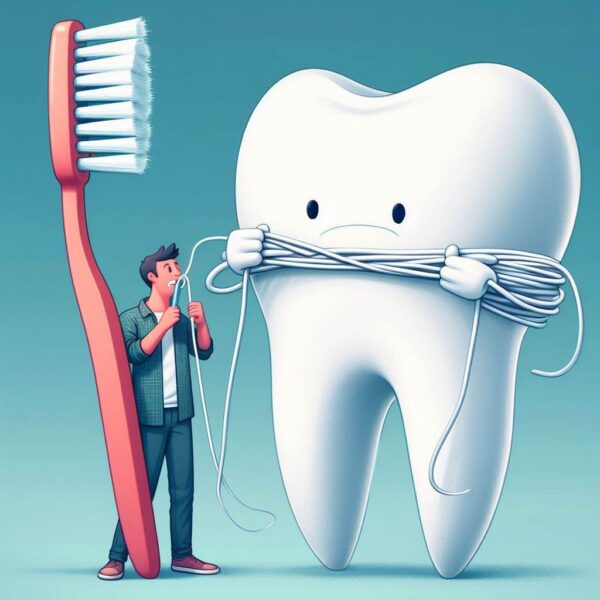
One common question that arises when discussing oral hygiene routines is whether to floss before or after brushing. While both flossing and brushing are essential components of a proper oral care regimen, the sequence in which they are performed can impact their effectiveness.
Understanding the optimal timing for flossing in relation to brushing can help individuals maximize plaque removal, prevent gum disease, and maintain overall oral health. In this article, we will explore the debate surrounding the sequence of flossing and brushing and provide insights into the benefits of each approach.
By gaining a better understanding of when to floss in your oral care routine, you can make informed decisions to promote optimal dental hygiene and achieve a cleaner, healthier smile.
Optimal Timing for Flossing:
The optimal timing for flossing in relation to brushing is a topic of debate among dental professionals. Some advocate flossing before brushing, while others recommend flossing after brushing. Both approaches offer distinct benefits, and the best choice may depend on individual preferences and oral health needs.
• Flossing Before Brushing:
Flossing before brushing allows you to remove plaque and food particles from between teeth and along the gum line before brushing. This can help loosen debris and make it easier to remove during brushing, resulting in more effective plaque removal and a cleaner mouth overall.
• Flossing After Brushing:
Flossing after brushing allows you to dislodge any plaque or debris that may have been loosened during brushing and remove it from between teeth and along the gum line. This ensures thorough plaque removal and can help prevent gum disease and tooth decay.
Should I Rinse My Mouth After Flossing?
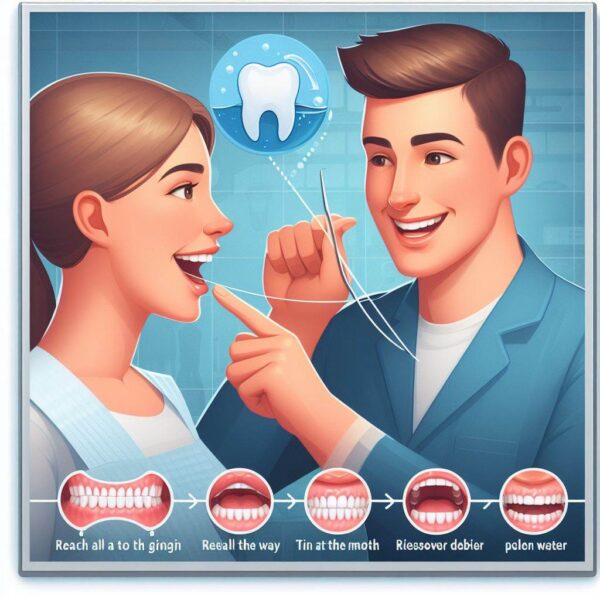
After completing their oral hygiene routine, many individuals wonder whether they should rinse their mouth after flossing. This seemingly simple question has generated some debate among dental professionals.
While rinsing with mouthwash or water may seem like a logical step to remove any loosened debris, the answer is not always straightforward. In this article, we will delve into the topic of rinsing after flossing and explore the potential benefits and drawbacks of this practice.
By understanding the implications of rinsing after flossing, individuals can make informed decisions about their oral hygiene routine to maintain optimal dental health.
Considerations For Rinsing After Flossing:
The decision to rinse your mouth after flossing depends on various factors, including personal preference, oral health goals, and the type of flossing technique used. Here are some considerations to keep in mind:
1. Removal of Loosened Debris:
Rinsing with water or mouthwash after flossing can help remove any loosened plaque or food particles that may have been dislodged during flossing. This can leave your mouth feeling fresher and cleaner.
2. Fluoride Protection:
Some dentists recommend rinsing with a fluoride mouthwash after flossing to help strengthen tooth enamel and protect against cavities. Fluoride mouthwash can reach areas that may have been missed during brushing and flossing, providing additional protection against tooth decay.
3. Preservation of Fluoride from Toothpaste:
On the other hand, rinsing immediately after flossing may wash away residual fluoride from toothpaste left on the teeth after brushing. Fluoride helps remineralize tooth enamel and provides long-lasting protection against cavities, so rinsing too soon may diminish its effectiveness.
4. Gum Health:
For individuals with sensitive gums or gum disease, rinsing with a gentle mouthwash after flossing may help soothe irritation and promote gum health. However, harsh mouthwashes containing alcohol may exacerbate gum inflammation and should be avoided.
Does Flossing Whiten Teeth?
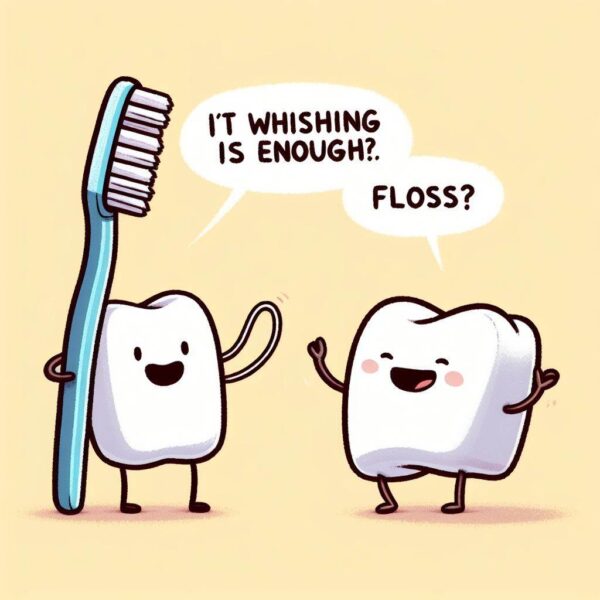
In the quest for a brighter, more radiant smile, individuals often explore various methods to whiten their teeth. While brushing, professional whitening treatments, and over-the-counter whitening products are commonly used, some may wonder if flossing can also contribute to teeth whitening.
Flossing is primarily associated with removing plaque and debris from between teeth and along the gum line to prevent cavities and gum disease. However, its potential impact on tooth color is less clear.
In this article, we will explore the relationship between flossing and teeth whitening and discuss whether flossing alone can effectively lighten tooth discoloration. By understanding the role of flossing in dental care and its potential effects on tooth color, individuals can make informed decisions to achieve and maintain a brighter smile.
The Role Of Flossing In Dental Care:
Flossing is an essential component of a comprehensive oral hygiene routine. It helps remove plaque, food particles, and bacteria from areas between teeth and along the gum line where toothbrushes cannot reach effectively. By removing these accumulations, flossing helps prevent cavities, gum disease, and bad breath, promoting overall dental health.
Other Methods For Teeth Whitening:
For individuals seeking to whiten their teeth, there are several alternative methods available:
1. Professional Whitening Treatments:
Professional whitening treatments performed by a dentist are highly effective for removing stubborn stains and achieving noticeable results. These treatments typically involve the use of bleaching agents or laser technology to lighten tooth color.
2. Over-the-Counter Whitening Products:
Over-the-counter whitening products such as whitening toothpaste, strips, and gels can help lighten surface stains and enhance tooth whiteness. However, they may not be as potent as professional treatments and may take longer to produce visible results.
3. Healthy Lifestyle Habits:
Maintaining good oral hygiene practices, including regular brushing, flossing, and dental check-ups, can help prevent stains and maintain the brightness of your smile. Additionally, avoiding tobacco products, limiting consumption of stain-causing foods and beverages, and drinking plenty of water can also promote whiter teeth.
Conclusion:
Mastering the art of flossing is key to achieving optimal oral hygiene and maintaining a healthy smile. By incorporating proper flossing techniques into your daily routine, you can effectively remove plaque and debris from between your teeth and along the gum line, reducing the risk of cavities, gum disease, and bad breath.
Remember to be gentle yet thorough when flossing, using a fresh section of floss for each tooth and reaching all surfaces of the tooth, including the sides and below the gum line.
With consistent practice and the guidance of your dental professional, you can ensure that your flossing routine is both effective and beneficial for your oral health. I hope now you understand fully everything how to use dental floss correctly.
FAQs:
Q1: How often should I floss my teeth?
A: It is recommended to floss your teeth at least once a day, preferably before bedtime, to remove plaque and debris that may have accumulated throughout the day.
Q2: Should I floss before or after brushing my teeth?
A: The sequence of flossing and brushing can vary, but many dental professionals recommend flossing before brushing to dislodge plaque and debris from between teeth and along the gum line before brushing.
Q3: How much floss should I use for each session?
A: A sufficient length of floss is approximately 18 to 20 inches. Wind most of the floss around your middle fingers, leaving about 1 to 2 inches of floss to work with between your fingers.
Q4: Is it normal for my gums to bleed when I floss?
A: Occasional bleeding during flossing may occur, especially if you are new to flossing or have sensitive gums. However, persistent or excessive bleeding may indicate gum disease and should be evaluated by a dental professional.
Q5: Can I reuse the same section of floss for multiple teeth?
A: It is not recommended to reuse the same section of floss for multiple teeth, as this can transfer bacteria and plaque from one tooth to another. Use a fresh section of floss for each tooth to ensure thorough cleaning.
